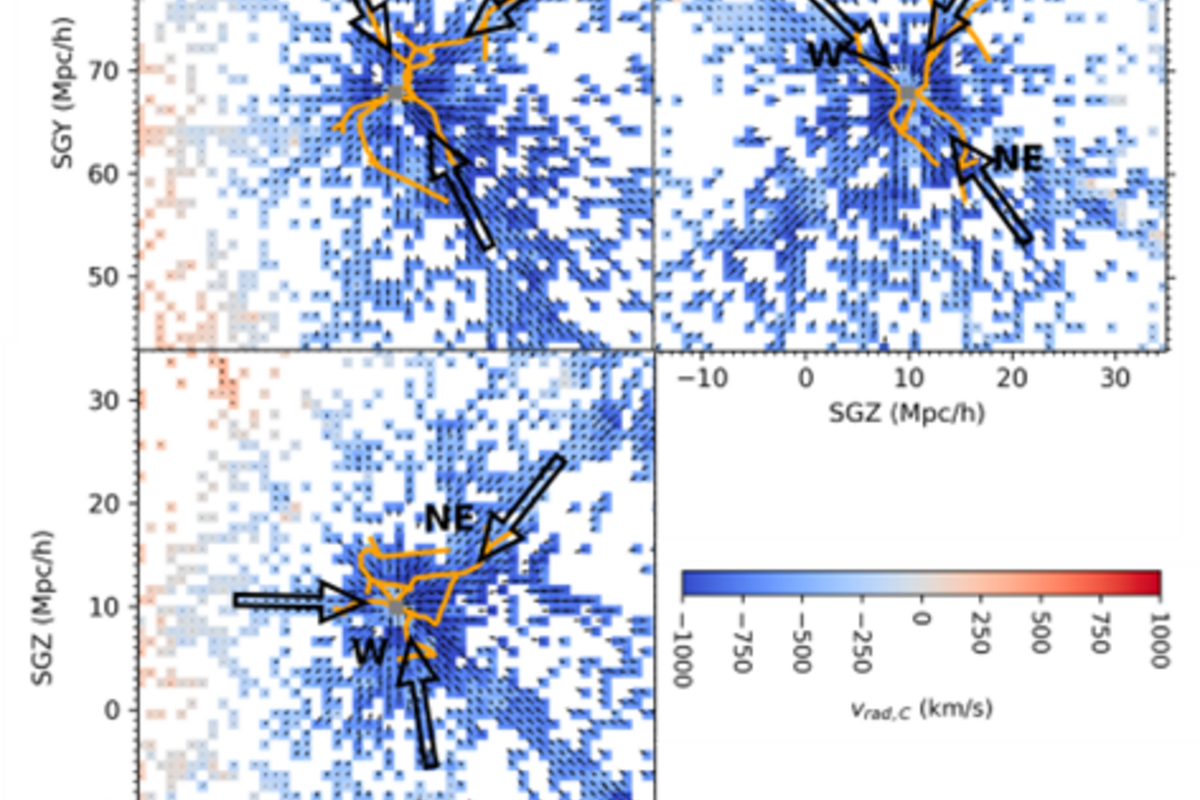ASTROPHYSICS
SuperMUC-NG Helps Researchers Study our Cosmic Neighborhood in Unprecedented Detail
Principal Investigator:
Dr. Jenny Sorce
Affiliation:
Ludwigs-Maximillians-Universität München
Local Project ID:
Pn29me
HPC Platform used:
SuperMUC-NG at LRZ
Date published:

Three 20 Mpc/h (~1 billion light-years) thick Supergalactic slices of the simulated box representing our local neighborhood in the vicinity of the Coma cluster of galaxies counterpart. More precisely, the simulated massive dark matter halo standing for the Coma cluster is in the center of the slices. The orange lines represent the filaments connecting Coma replica to the cosmic web. NE and W stand for the North-East and West simulated filaments lookalike of the observed ones. The gradient of color gives dark matter halo velocity field in Coma outskirt. Black arrows emphasize that matter is mostly fueled into the clusters via the filaments (blue cells alongside orange lines) with increasing collinearity with decreasing distance to the cluster.
Dr. Jenny Sorce at the Ludwigs-Maximillians Universität München is focused on studying the concentration of galaxies called the Coma, which is made up of more than 1,000 galaxies in our interstellar neighborhood. Experimental and observation facilities have grown rapidly in recent years, allowing researchers to gather detailed information about how these galaxies and their constituent materials interact with one another. That said, understanding how these galaxies originally formed and gaining detailed insights into their current behavior still proves challenging, and researchers have tuned to the power of high-performance computing (HPC) to complement their experimental approaches.
With access to the SuperMUC-NG supercomputer at the Leibniz Supercomputing Centre (LRZ) the researchers were able to replicate the Coma cluster in unprecedented detail, allowing the team to better study how the Coma cluster was connected to the larger cosmic web and how the specific connections have influenced its formation and growth. The team’s paper was just accepted to Astronomy and Astrophysics.
For the full report, click here.
For the pre-print publication, click here.